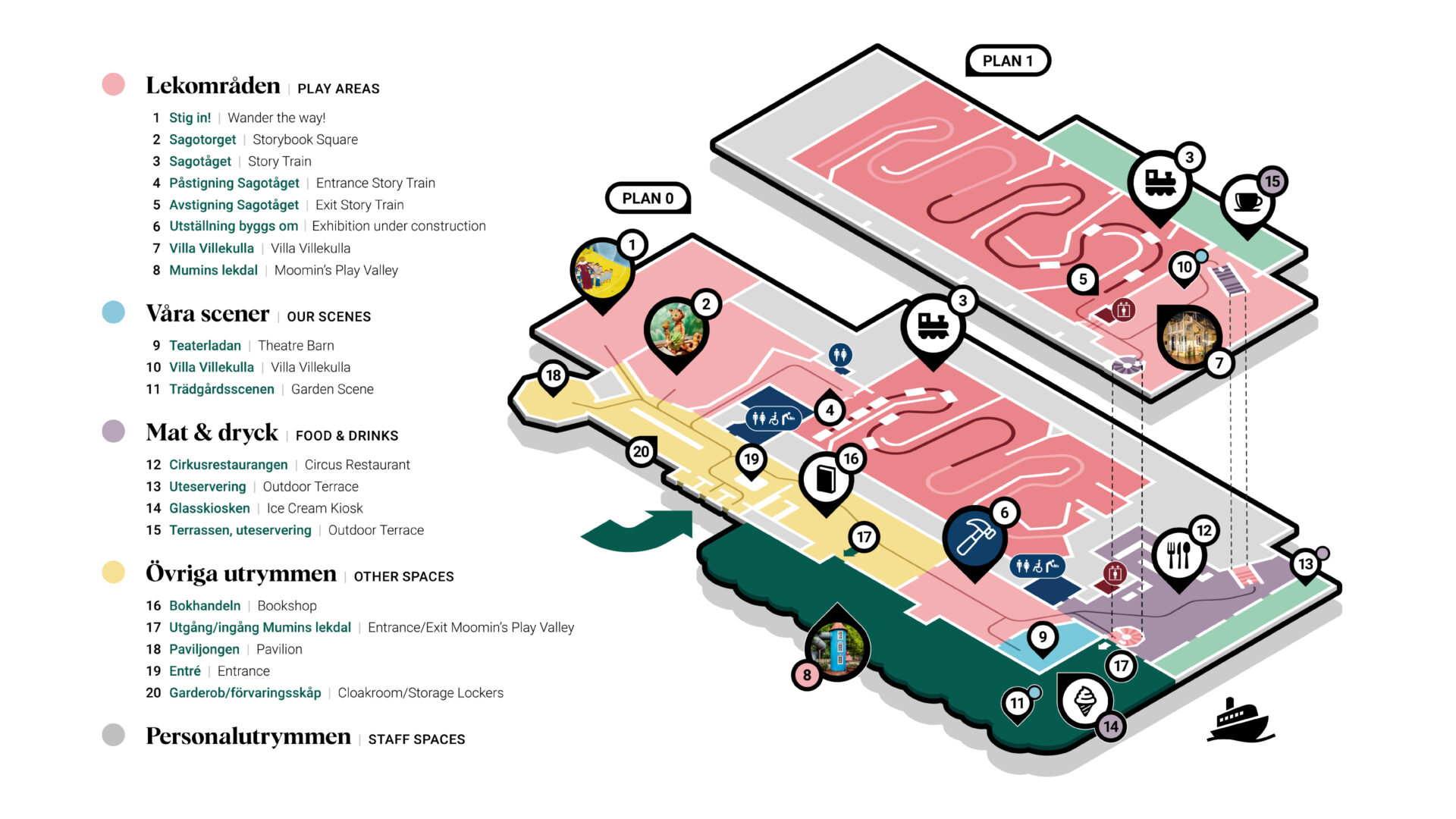Accessibility
It goes without saying that everyone should be able to visit Junibacken and have fun while they are here. That is why we are continuously working to improve and adapt the experiences for all our visitors.
Frequently asked questions and answers
Can I ride The Story Train with a wheelchair?
Yes, it’s fine, but due to evacuation reasons we can only let one wheelchair user ride The Story Train at a time. This applies regardless of whether you ride seated in your wheelchair or not. One trip with The Story Train takes about 15 minutes. About the sound and light in The Story Train, see under Junibacken’s environments, below.
What applies to me as a companion?
You don’t need to pre-book an entrance ticket, just show your companion’s ID at the cashier when you arrive!
Junibacken’s environments:
There are of course wheelchair-accessible toilets and an elevator to easily get between floors.
Our play exhibitions vary in dynamics and accessibility:
The Story Book Square: There are 15 built-up play environments here, and can be difficult to access for those with reduced mobility as there are cobblestones and climbing environments. The noise level here can be high on busy days, usually a little quieter later in the day.
The Pavilion is a calmer, brighter environment, where smaller exhibitions, crafts and reading change during the seasons of the year. It is fully wheelchair accessible.
In Salongen there is (until January 2026) the calmer, tactile exhibition Wander the way! (which is based on Pija Lindenbaum’s book universe), an exhibition entirely at ground level, but with soft floors in parts of the rooms. There are darker areas of light and a soft soundscape.
Up at Villa Villekulla on the upper floor it is bright and has a lot of floor space (when there is no theater here!). The elevator goes here from both the restaurant and the final station of The Story Train. There is plenty of space for wheelchairs here, and there is also a ramp to the lower floor of the villa and its play environments from the side entrance. During the theater performance Pippi Moves In, the curtains are drawn and the darkness is reduced, and the performance sounds can sometimes be perceived as loud.
The Story Train goes through 6 of Astrid Lindgren’s fairy tales, and the lighting goes from bright for the first two fairy tales (Madicken and Emil), to then switching to a darker expression for the rest of the journey to show night, basements, forest environments, etc. There are no “jump scares”, but a couple of visual elements can be perceived as frightening; the big rat Tjofsan and the dragon Katla. In terms of sound, Astrid Lindgren’s narration alternates with sound images that can sometimes be perceived as sharp, such as thunder in Ronja’s or dragon sounds in Katla’s. After disembarking, you go up to Villa Villekulla, or take the elevator down to the restaurant.
At busy times, such as lunchtime, the restaurant can be perceived as lively and the nice circus environment can be perceived as overstimulated. There is a quieter outdoor environment, both outside the restaurant and up outside Villa Villekulla on the terrace.
Garden: The ground in the garden is hard gravel, with good wheelchair access. Here is Moomin’s play valley, which in some parts is a climbing environment. Here is also the Garden Stage where we perform summer holiday theatre. Loose benches can be moved and adapted. There is also the ice cream kiosk!
How is Junibacken adapted for other functional challenges?
Many people visit Junibacken with various forms of functional variations. On The Story Train you can take one of our books with you, which you can read yourself during the tour. Tell the staff when you board and they will help. Unfortunately, we cannot offer a sign language interpreter during our theatre performances, but if you contact us before your visit, we will of course offer scripts that you can take part in. Contact info@junibacken.se.
Map of Junibacken

